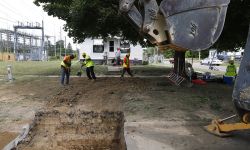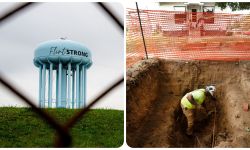In echo of Flint, some Chicagoans wary of lead water pipe replacement
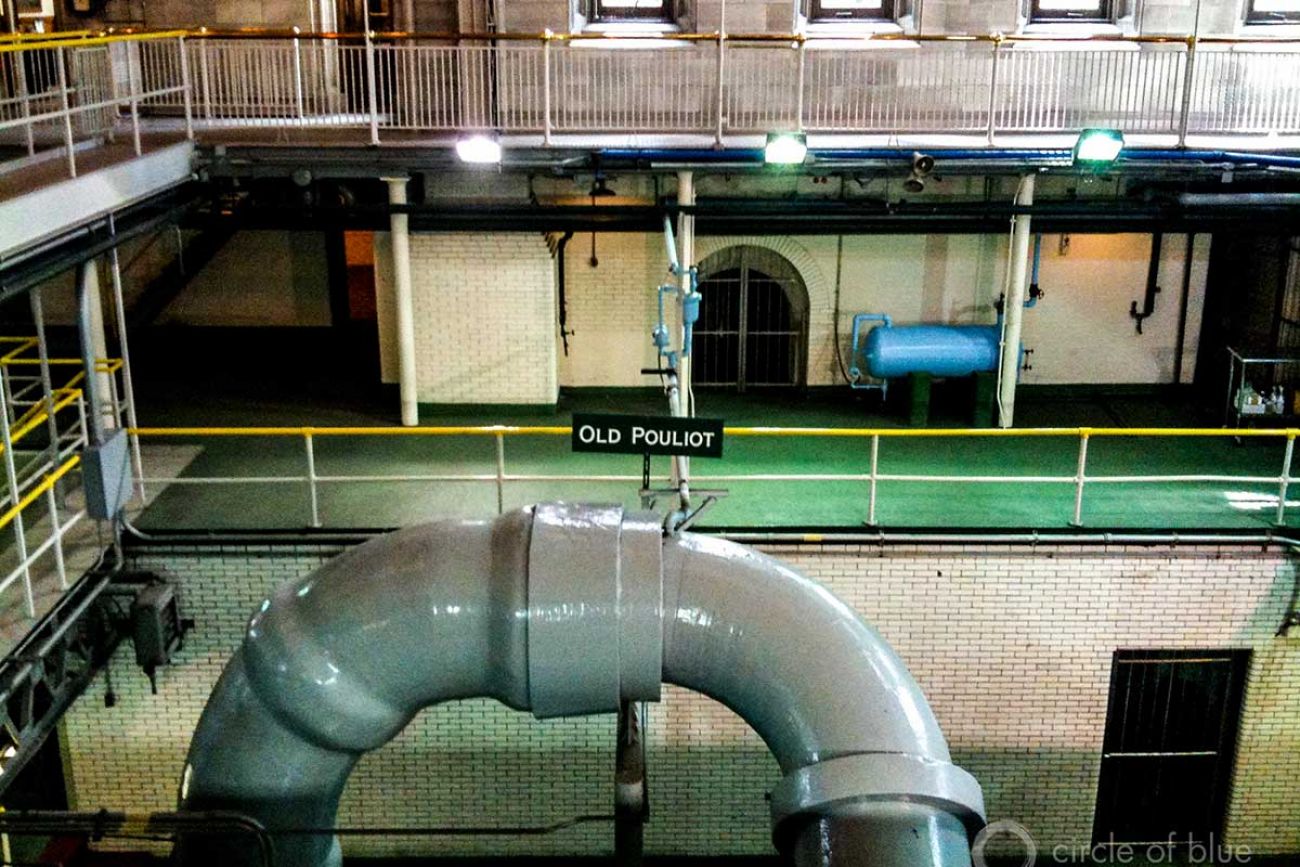
CHICAGO — It’s just before 6 p.m. on a breezy Wednesday evening in Little Village, a neighborhood on Chicago’s West Side. Department of Water Management staffers lift two tables out of the trunk of a minivan on the 3100 block of Ridgeway Ave. They drape them with blue tablecloths bearing DWM’s logo.
A small crowd gathers as the staffers, alternating between English and Spanish, explain that Chicago has embarked on a novel public health program. The city is offering to replace toxic lead water pipes leading to their homes — at no cost to the residents.
This article is part of The Great Lakes News Collaborative, which includes Bridge Michigan, Circle of Blue, Great Lakes Now at Detroit Public Television, and Michigan Radio. It unites newsroom resources to report on the most pressing threats to the Great Lakes and drinking water supplies, including pollution, climate change, and aging infrastructure. The independent journalism is supported by the Charles Stewart Mott Foundation.
But the offer, unique among American municipalities, generates scant enthusiasm. In fact it sinks like a stone thrown into a pool. A man wearing a red ball cap is the first to speak up. “How many people have died of lead poisoning in Chicago in the past 100 years?” he asks in Spanish.
Related stories:
- How to protect against lead as Michigan waits for new water pipes
- Michigan cities must begin replacing lead pipes. But who has the cash
- How much should lawyers make in the Flint water crisis settlement?
The science of lead poisoning is well-documented, a staffer explains. Exposure to trace amounts can cause damage to the brain and nervous system, hearing and speech problems, learning problems, and more, especially in young children. It’s rare for people to die of lead poisoning, but there are long term side effects. The man shakes his head and shrugs his shoulders. “I would like to see more proof.”
In the majority-Latino Little Village, concerns about the project are multi-dimensional. Some are worried about the disruption all the digging will cause to lawns and gardens. Others fear, based on onerous Trump-era immigration policies, that they will later be punished for accepting government assistance. Some residents fears’ even reach all the way back to the 1932 Tuskegee Experiments, in which the US government used Black Americans as test subjects.
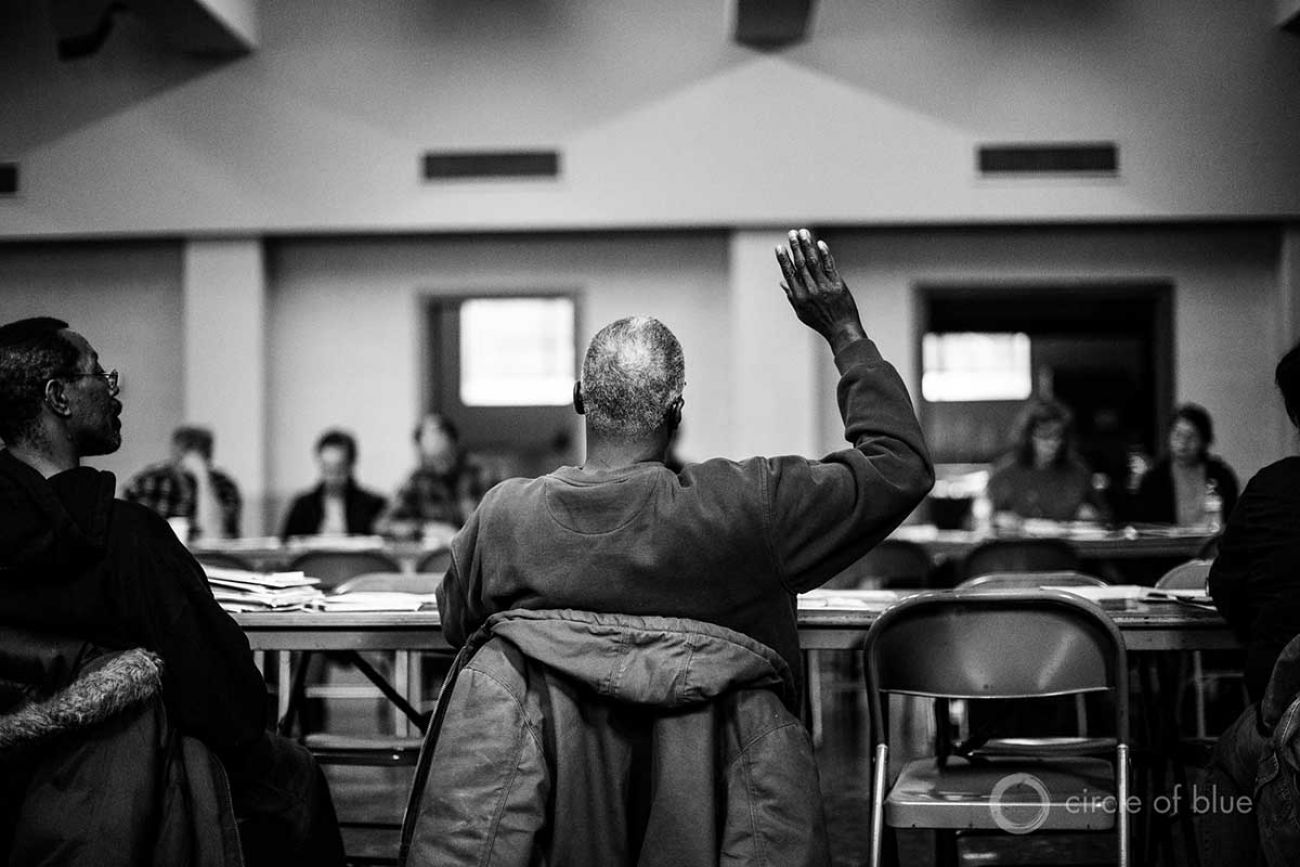
Just as with public resistance to Covid-19 vaccines, the response to Chicago’s lead pipe replacement project is a story playing out in neighborhoods across the country. Government public interest initiatives, even with the best of intentions and resources, are being curtailed by mistrust.
Last year, Chicago’s mayor Lori Lightfoot announced an $8.5 billion program to replace all lead pipes in the city. One feature of the initiative, the equity program, offers to fully subsidize the replacement for Chicagoans below a certain income level.
The project was applauded across the board as long overdue. Chicago has the most lead pipes of any U.S. city, as it installed lead pipes for nearly a century until they were federally banned in 1986. Statewide, people of color are twice as likely to live in areas with lead pipes than their white counterparts. From 2015 to 2020, the lead levels in some parts of the state were as high as those in Flint, Michigan during its devastating water crisis that started in 2014.
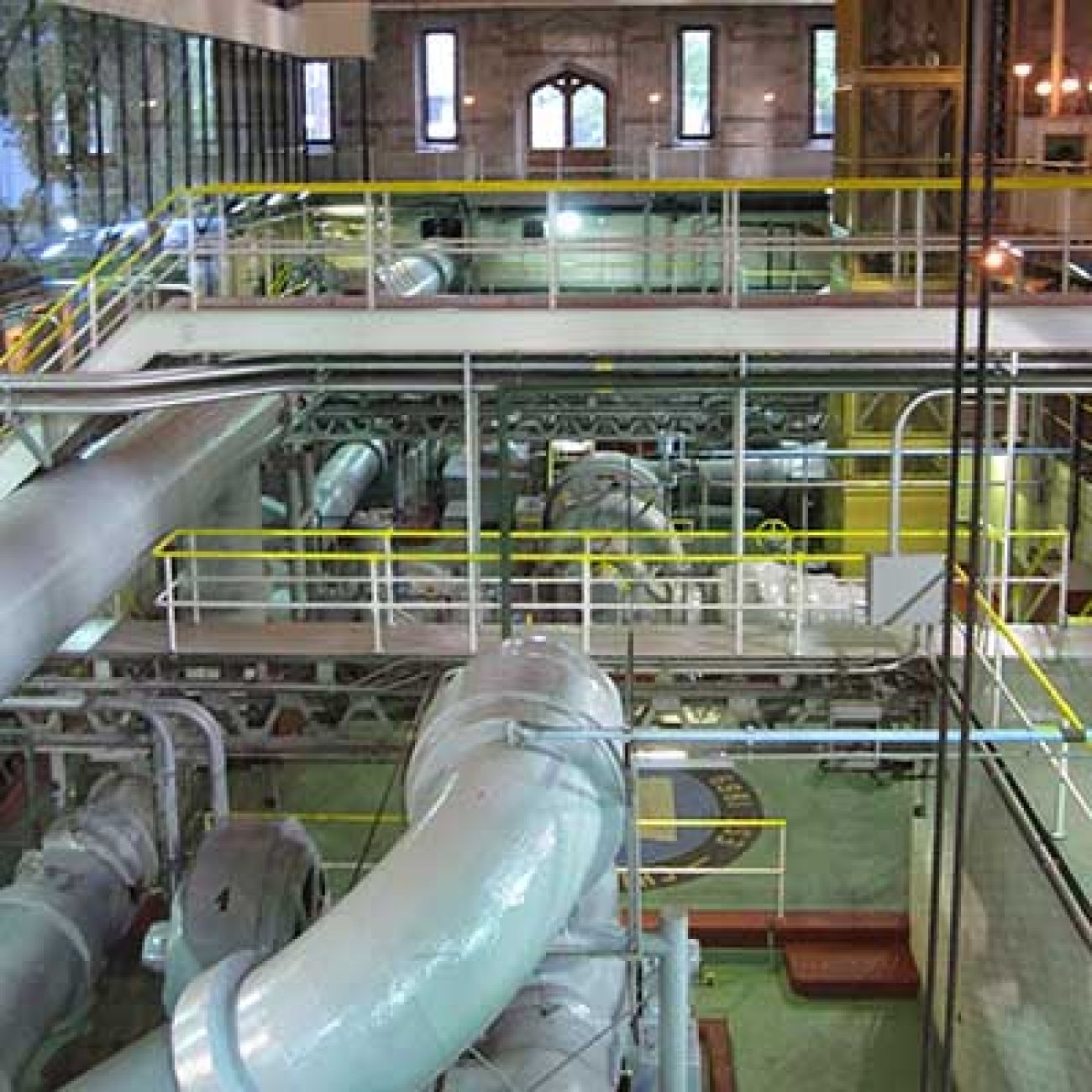
The Wednesday evening meeting is part of a pilot program on that block of Ridgeway Avenue, where officials are making an extra-strong push for residents to sign up to get their pipes replaced. The city, for its part, is pouring resources into outreach. Since applications opened in March, city staffers have knocked on doors, put up fliers, hosted block meetings, hired a bilingual community coordinator to better reach Spanish-speaking residents, closely documented who has expressed interest in the program, and more. Department leaders insist that this is just the beginning.
The DWM deemed the block a good location for a pilot program because it had already been planning to replace that block’s century-old water main, the central water pipe below the street. The wide variety of homes on the street also make it a good fit for the program: there are one and two story houses with yards and fences and varying distance from the street.
“People on this block are the beneficiaries of being the first to get this—and they’re getting it for free, which is awesome,” said Alderman Michael Rodriguez, who represents the neighborhood on Chicago’s city council and has knocked on doors to raise awareness about the program. “But at the same time, since they’re the first to get it, they have a lot of questions. They have very few people they can go to who have had this experience.”
Still, convincing residents to participate has been grueling. Alderman Rodriguez estimated that after three block meetings like the one on Wednesday, around half of the 40 or 50 homeowners who live on the block had signed up. Citywide, signups are even slower. Four months after applications for the equity program opened, only 143 homeowners have applied.
One impediment has little to do with lead pipes and more to do with the politics and practice of immigration policy. Under the Trump administration’s 2019 “public charge” rule, documented immigrants who receive public benefits such as Medicaid or food stamps for over a year may be deemed ineligible for a green card. While President Joe Biden has since reversed this rule, it casts a long shadow across Little Village.
Jadhira Sanchez, a lifelong resident of Little Village who works with the community nonprofit Enlace Chicago, said that immigrants remain hesitant to accept government assistance. She recounted an experience distributing rent relief funds with Enlace during the pandemic.
“Even when we were handing checks out to folks, before they would even grab the check, they would say, ‘are you sure I’m not going to get in trouble? Are you sure that, a year from now, I’m not going to be charged this money?’” she said. “We would get asked that question probably twenty times in one call.”
Asa Ascencio Zuccaro, executive director of the nonprofit Latinx Flint, said that the same could be seen in Flint’s immigrant communities during their water crisis. City-run assistance centers often requested residents’ IDs or social security numbers, which had a chilling effect in the immigrant communities. As a result, grassroots community organizations and religious groups took on the mantle to get their neighbors water.
Even after the peak of the crisis, when the city was replacing lead water pipes, some residents opted out — not because they felt the operation was unimportant, but out of mistrust of city officials. “A lot of people were just uncomfortable with people coming into their homes, so they declined,” he said.
But this was just the latest chapter of a much longer story in Flint, where chronic disinvestment left the city on shaky ground well before the water crisis. “There’s a historical sentiment of feeling left out or marginalized,” said Ascencio Zuccaro.
So, too, in Little Village, where the roots of homeowners’ hesitancy extend back decades. Some residents are hesitant to be the first ones to participate in any government-run program. The 1932 Tuskegee Experiment, an ethically abusive study in which the US Public Health Service let Black subjects suffer from syphilis without their informed consent and offered no remedies, is embedded in the neighborhood’s collective consciousness.
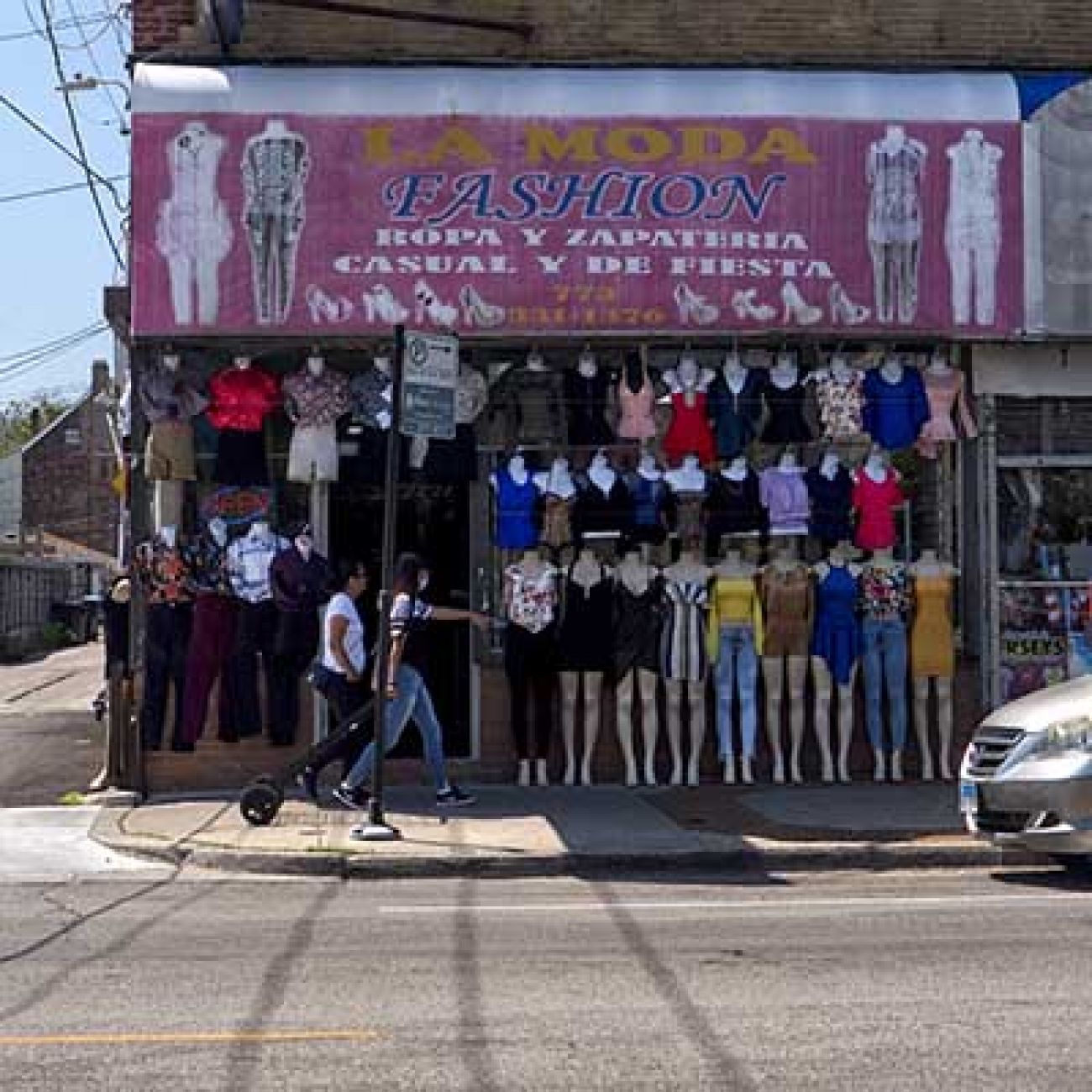
“There are programs that have been very shady towards minority communities,” Sanchez said. “People might not even know the name of the project, but they’ll be like ‘Back in the day, remember that did this to the morenos. How can I trust that they aren’t going to do the same thing to me?’”
Residents have long protested that the city uses it as an environmental “dumping ground.” An industrial corridor wraps around the south and west sides, and the neighborhood suffers from disproportionate levels of air pollution from nearby manufacturing.
An event from last year weighs heavily on residents’ minds: A developer demolished a defunct smokestack right next to Little Village, blanketing the neighborhood in dust in the middle of a respiratory pandemic. Mayor Lightfoot said that the developer promised there would be no debris, but residents blamed the city for signing off on the proposal and for the lack of advance notice.
“Everything went black at eight in the morning, and you couldn’t see three feet in front of you. People had asthma attacks,” said Maria Cecilia Quiñones Peña, a block resident who is also a water efficiency professional with the nonprofit Elevate Energy. “Little Village is constantly forgotten. So why would people trust the city to do anything in their homes, particularly when it impacts people’s bottom dollars?”
Other residents harbor concerns related to the potential for household water costs to rise. Rob Castaneda is a lifelong resident of Little Village who co-founded the community organization Beyond the Ball. He explained that the requirement of installing a water meter—which allows for a water bill based on the amount of water actually used that month, rather than a flat rate—makes many working class residents uneasy.
According to DWM officials, water bills typically drop by 25-50% after a meter is installed. But without the meter, “you know what that cost is; it’s fixed,” Castaneda said.
Despite the hesitancy, the city is making slow progress. “It’s a bargain,” said one resident who attended the meeting. Indeed, city leaders are stressing that the program makes financial sense for residents, as the operation typically costs between $15,000 and $25,000.
“Anybody looking at the health side, it’s a no-brainer,” Casteneda added. “But that’s the thing about a working class neighborhood: unfortunately, the decisions aren’t always just what’s the healthiest, it’s what makes the most economic sense.”
Angel Hawthorne, the DWM’s director of public affairs, said that to ease residents’ mistrust, the department is taking a boots-on-the-ground approach to the Little Village pilot program—and little by little, it’s working.
“By walking the block and talking with people, oftentimes I have had that opportunity to say, tell me [your concerns]. And I think by now they’ve seen me so much that they know, okay, ‘she keeps coming back, so she must really care,’” she said with a laugh.
Indeed, after the meeting on Wednesday, several residents signed up. But others, like the man in the red ball cap, left unconvinced. “It’s the same thing every time,” he told Circle of Blue after the meeting. “They try to convince us, but it’s not in our benefit. I’m just trying to protect myself.”
Sarahi Rincon Molina assisted with Spanish translation for this article.
Michigan Environment Watch
Michigan Environment Watch examines how public policy, industry, and other factors interact with the state’s trove of natural resources.
- See full coverage
- Subscribe
- Share tips and questions with Bridge environment reporter Kelly House
Michigan Environment Watch is made possible by generous financial support from:
Our generous Environment Watch underwriters encourage Bridge Michigan readers to also support civic journalism by becoming Bridge members. Please consider joining today.
See what new members are saying about why they donated to Bridge Michigan:
- “In order for this information to be accurate and unbiased it must be underwritten by its readers, not by special interests.” - Larry S.
- “Not many other media sources report on the topics Bridge does.” - Susan B.
- “Your journalism is outstanding and rare these days.” - Mark S.
If you want to ensure the future of nonpartisan, nonprofit Michigan journalism, please become a member today. You, too, will be asked why you donated and maybe we'll feature your quote next time!


